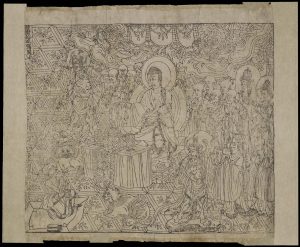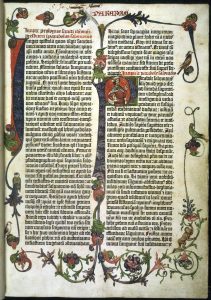We all know that Johannes Gutenberg, opens a new window invented the printing press. However, he wasn't the first to print a book. The history of printing, opens a new window is one of many small inventions that spanned centuries and nations. Around 3500 BCE ancient Mesopotamians used carved cylinder pieces to stamp clay tablets, the Chinese invented woodblock printing before 220 CE, and by the 1100s the Chinese had progressed to movable type, which wouldn't arrive in Europe until 400 years later when Gutenberg invented the printing press.
The world's oldest surviving dated printed document is the Diamon Sutra, opens a new window, which was printed using block prints in 868 CE. Currently held at the British Library, opens a new window, the book was hidden for centuries in a cave in northwest China. Seven strips of yellow-stained paper were printed from carved wooden blocks and pasted together to form a scroll over 5 meters long. Though written in Chinese, the text is one of the most important sacred works of the Buddhist faith.
Johann Gutenberg’s Bible was the first major book printed in Europe using movable type. Only 48 copies are known to have survived, of which only 20 are complete. Many copies, including the British Library’s paper copy, opens a new window, married the new technology of printing with the old, and contain hand-painted decorations to imitate the appearance of an illuminated manuscript, opens a new window. If you are interested in learning more about Gutenberg, we highly recommend: Gutenberg and the novel Gutenberg's Apprentice.
Join us this November at the Mandeville Branch of the St. Tammany Parish Library to view the exhibit "Reading the World: Tablet to Tablet" and learn more about the history of the written word. This week you can also create your own prints using the rubbing plates and stamps on the Activity Table at the front of the branch. And don't forget to check out some of the library's books on the history of the book.





Add a comment to: Tablet to Tablet: The Printing Press